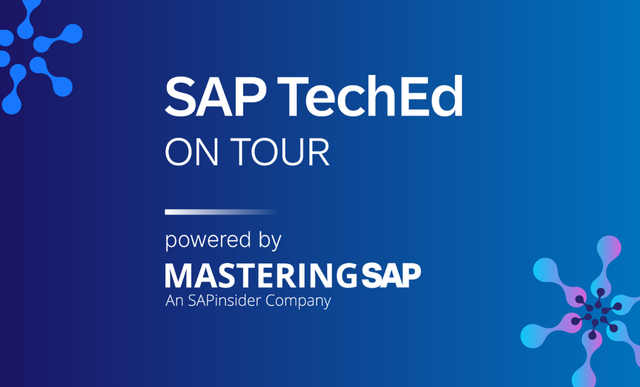SAP Workforce Planning
Filter By
Browse By
- SAP Analytics and AI
- SAP Application Development and Integration
- All SAP Application Development and Integration
- SAP ABAP
- SAP ABAP Development Tools
- SAP ABAP Test Cockpit
- SAP API Management
- SAP BAPI
- SAP Basis
- SAP BRF
- SAP Business Application Studio
- SAP CMS
- SAP Design Studio
- SAP Development Tools
- SAP DevOps
- SAP EAI
- SAP EDI
- SAP Extension Suite
- SAP Fiori
- SAP Fiori Elements
- SAP Integration Suite
- SAP Low Code Application Development
- SAP Low Code Automation
- SAP Netweaver
- SAP Release Management
- SAP UI5
- SAP Web Application Server
- SAP Web IDE
- SAP Business Process Management
- SAP Center of Excellence
- SAP CIO
- SAP Customer Experience
- SAP Data and Data Management
- All SAP Data and Data Management
- SAP BW
- SAP BW/4HANA
- SAP Crystal Reporting
- SAP Data Archiving
- SAP Data Center
- SAP Data Governance
- SAP Data Integration
- SAP Data Migration
- SAP Data Quality
- SAP Data Services
- SAP Data Strategy
- SAP Data Visualization
- SAP Data Warehouse Cloud
- SAP DMS
- SAP Document Control
- SAP EIM
- SAP ETL
- SAP ETL Tools
- SAP HANA
- SAP HANA Administration
- SAP HANA Deployment Infrastructure
- SAP HANA Studio
- SAP Master Data
- SAP Master Data Governance
- SAP MDM
- SAP Enterprise Architect
- SAP Enterprise Asset Management
- SAP ERP
- SAP Finance
- All SAP Finance
- SAP Accounting
- SAP AR AP
- SAP Asset Accounting
- SAP Billing Systems
- SAP BPC
- SAP BRIM
- SAP Cash Management
- SAP Central Finance
- SAP Controlling
- SAP COPA
- SAP Cost Center Accounting
- SAP e-invoicing
- SAP FICO
- SAP Finance Automation
- SAP Financial Closing Cockpit
- SAP Financial Consolidation
- SAP Financial Planning
- SAP FX Risk
- SAP General Ledger
- SAP Global Tax Management
- SAP Hyperion
- SAP Order to Cash
- SAP Payment Processing
- SAP Profitability Analysis
- SAP Rebate Management
- SAP S/4HANA Finance
- SAP Universal Journal
- SAP Governance Risk and Compliance
- SAP Human Capital Management
- SAP Intelligent Technologies
- SAP Platform and Technology
- All SAP Platform and Technology
- SAP Business Technology Platform
- SAP Cloud Connector
- SAP Cloud Integration Platform
- SAP Cloud Migration
- SAP Cloud Platform
- SAP Cloud Providers
- SAP Cloud Strategy
- SAP Container Platform
- SAP Digital Asset Management
- SAP Digital Integration Hub
- SAP Digital Signature
- SAP HANA Enterprise Cloud
- SAP HEC
- SAP Hyperscalers
- SAP Infrastructure
- SAP Messaging
- SAP Smart Forms
- SAP Quality and Testing
- SAP Security
- SAP Spend Management
- SAP Supply Chain Management
- All SAP Supply Chain Management
- SAP APO
- SAP Asset Management
- SAP Business Network
- SAP Digital Manufacturing Cloud
- SAP Digital Twin
- SAP EWM
- SAP IBP
- SAP Inventory Management
- SAP Label Printing
- SAP Logistics
- SAP Manufacturing
- SAP Manufacturing Automation
- SAP MES
- SAP MII
- SAP MM
- SAP MRO
- SAP MRP
- SAP Order Management
- SAP Plant Maintenance
- SAP PLM
- SAP Production Planning
- SAP S&OP
- SAP SD
- SAP SPM
- SAP Supply Chain Planning
- SAP Track and Trace
- SAP Transportation Management
- SAP System Administration
What Is SAP Workforce Planning?
Companies that want to better anticipate staffing needs — be they through organizational change, growth, or seasonal impact — use workforce planning. The process of workforce planning brings a data-driven approach to forecasting workforce requirements and strives to ensure a company is optimizing its hiring and training. Technology also plays a role in workforce planning, and SAP Workforce Planning is offered in the cloud-based SAP SuccessFactors Workforce Planning module.
Good workforce planning typically includes analysis of the following:
- Available talent
- Forecasted talent needs
- Gaps between what is forecasted and what is available
- Determination of how to fill talent gaps.
Filling talent gaps goes beyond simply hiring full-time workers. It can also include part-time or seasonal labor or contract work. The solution to workforce deficits may be inside the company already and achieved through training and promotion from within.
SAP Workforce Planning with SAP SuccessFactors Workforce Planning is one option for SAP customers, but it’s not the only option available. For example, vendors such as Alight offer pre-packaged workforce planning solutions. SAP partners like IBM and Accenture help companies implement workforce planning processes and technologies.
What Is SAP Workforce Planning?
Companies that want to better anticipate staffing needs — be they through organizational change, growth, or seasonal impact — use workforce planning. The process of workforce planning brings a data-driven approach to forecasting workforce requirements and strives to ensure a company is optimizing its hiring and training. Technology also plays a role in workforce planning, and SAP Workforce Planning is offered in the cloud-based SAP SuccessFactors Workforce Planning module.
Good workforce planning typically includes analysis of the following:
- Available talent
- Forecasted talent needs
- Gaps between what is forecasted and what is available
- Determination of how to fill talent gaps.
Filling talent gaps goes beyond simply hiring full-time workers. It can also include part-time or seasonal labor or contract work. The solution to workforce deficits may be inside the company already and achieved through training and promotion from within.
SAP Workforce Planning with SAP SuccessFactors Workforce Planning is one option for SAP customers, but it’s not the only option available. For example, vendors such as Alight offer pre-packaged workforce planning solutions. SAP partners like IBM and Accenture help companies implement workforce planning processes and technologies.
Key Considerations for SAP Workforce Planning
- Data-driven workforce planning is still a strategic advantage. While it may seem like every company is engaging in HR best practices that include workforce planning, the truth is workforce planning and analytics tools are among the lowest adoption of HR software types, according to data from our recent HR technology research. Implementing a workforce planning process can give your organization a competitive edge.
- Bring HR together with finance and the business for workforce planning. Workforce planning is at its best when all relevant sources of insight and information are brought to the table. Finance can provide critical data on budget and forecasted company performance. Business executives drive the direction of the organization that will ultimately create staffing needs. Combine business and finance with HR’s insight for the best workforce planning outcomes.
- Define your workforce planning requirements. Determining the goals of your workforce planning program before undertaking the actual analysis will help drive more effective results. Figure out which departments and skill sets are most likely to need planning assistance. Additionally, identify specific time frames for planning — are you looking at the next year or beyond?
1311 results
-

Maintain Data Integrity by Implementing Profit Center Planning in the New General Ledger
Published: 15/April/2008
Reading time: 8 mins
Find out how to implement profit center planning in the new General Ledger and how to transfer planning data from Cost Center Accounting and Profitability Analysis to profit centers. Key Concept For SAP ERP 5.0 and 6.0, SAP integrated Profit Center Accounting into the new General Ledger (new G/L), so the profit center planning functionality...…
-

Best Practices for Implementing Sales and Operations Planning
Published: 29/March/2013
Reading time: 14 mins
The sales and operations planning (S&OP) process can bring about substantial improvements in the way a company manages its supply chain. Learn the building blocks of the S&OP process, what it needs in terms of technology, and how this is supported in different SAP solutions. Key Concept Sales and operations planning (S&OP) is the process...…
-

Meeting Demand with a Constrained Supply Using Product Allocation in SAP APO Global ATP
Published: 09/March/2016
Reading time: 22 mins
Learn the process flow of how product allocation can be used in SAP Advanced Planning and Optimization (SAP APO) Global available-to-promise (Global ATP) to meet customer requirements by managing the supply of scarce products. The system can perform availability checks in conjunction with product allocation checks. Key Concept Availability checks, also known as available-to-promise (ATP),...…
-
-

Learn How to Configure the Quick View Panel in the Search Lane and Workforce Viewer of HR Renewal 1.0 Feature Pack 4
Published: 10/April/2015
Reading time: 21 mins
Learn how to configure standard and custom infotype field information in the Workforce Viewer and quick view panel of the search lane functionalities of HR Renewal 1.0. Key Concept The Workforce Viewer is one of the new features released with HR Renewal 1.0 Feature Pack 4. The Workforce Viewer gives users an easy to use...…
-

Manage Lifecycle Planning in SAP APO
Published: 18/May/2016
Reading time: 13 mins
Learn how lifecycle planning can be configured in SAP Advanced Planning and Optimization (SAP APO) to forecast a new product, manage the introduction of the new product (phase-in), phase out the old product being replaced, and integrate it with forecasting techniques. Follow a step-by-step procedure to configure and run the associated master data objects, run...…
-

7 Steps to Configure Fiscal Weeks Right the First Time in SAP APO
Published: 23/July/2009
Reading time: 13 mins
Learn how to avoid common errors in defining fiscal weeks when creating them in SAP ERP Central Component and then importing them to SAP Advanced Planning & Optimization. Examine the touch points of using the time bucket of fiscal week for the planning area, planning books, and supply network planning. Key Concept You can carry...…
-

Bring Cash Forecasting into FI – You Can Do It in a Day
Published: 15/October/2002
Reading time: 22 mins
Many sites do not initially implement the cash forecasting capability of Treasury’s Cash Management module. Configuring it retroactively is easy to do and requires little knowledge of the Treasury module. The cash-forecast functionality within Treasury’s Cash Management module provides the ability to track potential cash all along the pipeline from sale to order fulfillment...…
-
-

Design a Quote Request Process Using Product Costing Components
Published: 29/November/2012
Reading time: 23 mins
Learn how to use product costing and internal orders to create a system that can meet all the basic requirements for developing a quote request. Key Concept The quote request process can start with an external customer request or an internal product simulation exercise. Multiple departments become involved to develop or review this process. As...…
-

Exploit Demand Planning to Forecast Dependent Requirements in SAP APO
Published: 20/October/2015
Reading time: 12 mins
Learn the process flow of an SAP Advanced Planning and Optimization (APO) forecast with bills of material (BOM). Follow a step-by-step procedure to release a forecast and interpret the results. Key Concept Demand Planning (DP) in SAP Advanced Planning and Optimization (SAP APO) helps to generate forecasts based on historical values. Forecasting is generally done...…
-

SEM vs. R/3 for Financial Statement Planning
Published: 15/November/2003
Reading time: 11 mins
Very few organizations have not performed some variation of financial statement planning at one time or another. These plans are usually produced to fulfill legal statutes or regulatory filings, so much time is often put into their accuracy. Private-sector organizations often engage in this type of activity on a weekly basis. The process involves the...…
Featured Experts
Become a Member
Unlimited access to thousands of resources for SAP-specific expertise that can only be found here.
Upcoming Events
-

SAP TechEd on Tour, powered by Mastering SAP
November 12 - 14, 2025
Sydney, New South Wales
Australia
View Event
Related Vendors
Your request has been successfully sent


